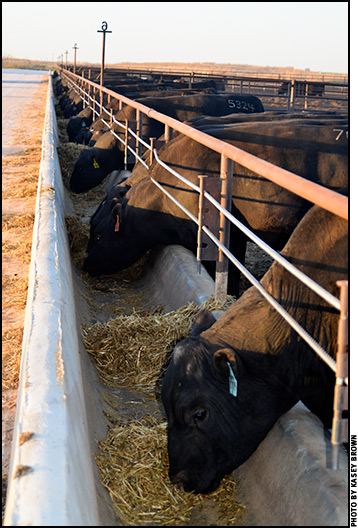VFD Update

VFD has been in effect for almost two years; veterinarian gives insight on its implementation.
As of Jan. 1, 2017, beef producers had to comply with a new rule regarding use of antibiotics in feed. Russ Daly, Extension veterinarian with South Dakota State University, says the veterinary feed directive (VFD) works like a prescription.
“If a beef producer needs to use medication in feed, the veterinarian fills out the form, and you take the form to the feed store and they sell you the medication for your cattle,” he explains.
The purpose was to give veterinarians more oversight of how certain medications are used in livestock feed. It doesn’t affect every feed additive. Tetracyclines are the main antibiotics for which the VFD is needed, he says.
When a veterinarian fills out a VFD, producers are required to follow exactly what’s on the label regarding approved dosages, etc.
“It continues to be illegal to use any medication in a manner not on the label. In the past, however, because these drugs were available over the counter, there was no way to make sure rules were followed. Now that a veterinarian is involved and has to fill out the form in a specific manner, there is no leeway for going off-label in a different dosage or using the drug for a disease not on the label,” says Daly.
Until VFDs became necessary, many producers used feed-grade medications out of habit rather than need. The requirement for a VFD created opportunity for producers to discuss feed programs with their veterinarian. They could even potentially reduce costs by using different ways to prevent and treat diseases.
It took several months of transition for the producers accustomed to using feed-grade medications to come on board with new regulations, but people are figuring out how to manage with these changes, he says.
“The number of calls I’ve received the past eight months has dropped off. I think veterinarians now have their own protocols in place and have established the necessary relationships with feed suppliers in their area and with their clients,” says Daly.
At first there were many questions and some concerned producers.
“We had many calls from people wondering about specifics of filling out the form. Producers and veterinarians were trying to continue with the same treatments they’d been using for the same problems. Some were able to continue doing this with the VFD, and some needed to change,” he says.
It was a matter of getting people to understand the changes, the reasons behind them, and to realize they could still manage without doing everything like they’d done in the past.
“Beef producers needed to realize that these products had been used for purposes and diseases that were not on the label — like pinkeye and foot rot,” says Daly.
The new regulation created more conversations between veterinarians and producers. In some cases producers were forced to seek out a veterinary relationship, which has mostly been a good thing, Daly explains. It created some antagonism between producers and veterinarians, however, when veterinarians stuck by the rules. Some producers wanted to do the same things they’d done in the past.
For the most part this transition has gone smoothly. Daly says veterinarians no longer get very many questions regarding the forms or in what cases a VFD is needed. There is still some confusion, however, over what the whole process is about. The VFD doesn’t affect injectable medications, though some of the water medications are now under prescription labels, Daly says.
Some producers think it has affected every treatment for animals, and that is not the case, he clarifies. This has caused more communication between producers and veterinarians. In many cases producers discovered they didn’t really need to use that medication the way they’d been using it in the past.
“They may have discovered that the way they were using it was ineffective, or that there are better ways to approach respiratory disease, foot rot, pinkeye, or other bacterial infections on pasture and in the feedlot.”
It has been an educational process, which overall has been beneficial.

Editor’s Note: Heather Smith Thomas is a cattlewoman and freelance writer from Salmon, Idaho.






